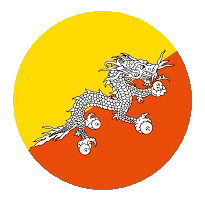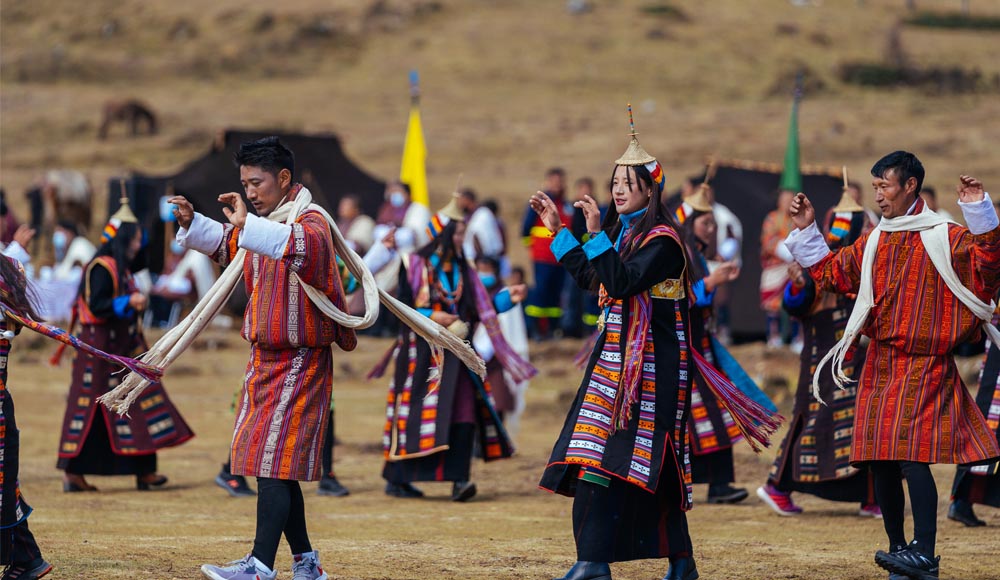The annual Royal Highland Festival is held from October 23-24 every year at Laya in the Gasa district. The festival, which is held at 4,000m above sea level, aims to celebrate, promote and preserve the life and culture of the nomadic highland people of Bhutan, support their economy, exhibit the beauty and wonders of the highlands, and laud their resilience.
Guests attending the two-day festival can enjoy the breathtaking sights and sounds of the high Himalaya, as well as games, parades and competitions showcasing highland animals including yaks, horses and mastiff dogs. Some of the animals are dressed in expensive fabrics with colored hair and adorned bells. In addition, a variety of cultural programmes will be performed by the Layaps, the indigenous people inhabiting Laya, including traditional songs, dances, poetry recitations and gift offerings. Layaps refer to their homeland as Be-yul – "the hidden land.”
The festival will also feature stalls selling local produce as well as showcasing highland agriculture technology, medicinal herbs and plants, among other things. The festival attracts communities from all over Bhutan and many tribes come down from the High Himalayas to compete in races and showings of their animals. The festival will also feature textile and souvenir stalls, and food stalls displaying local cuisines such as dried yak cheese, butter and alcoholic beverages.
Located in the extreme north-west of Bhutan, Gasa district is home to some of the highest mountain peaks in the country. Over a hundred glacial lakes found at the foot of these mountains feed some of the biggest rivers in the country, including the Phochu and Mochu rivers. With an elevation ranging between 1,500 to 4,500m above sea level, the whole district falls under the Jigme Dorji Wangchuck National Park and is home to various species of birds and animals such as yak, musk deer, blue sheep, snow leopard, red pandas, snow pigeons, Himalayan black bear, and the national bird and animal of Bhutan, the raven and takin.
Activities in Laya:
- Yak Riding
- Horse Riding
- Photoshoot in Laya dress
- Scavenger Hunt
- Visit the house that hosted Zhabdrung when he first visited Bhutan. The family still has relics of Zhabdrung that they received as gifts


